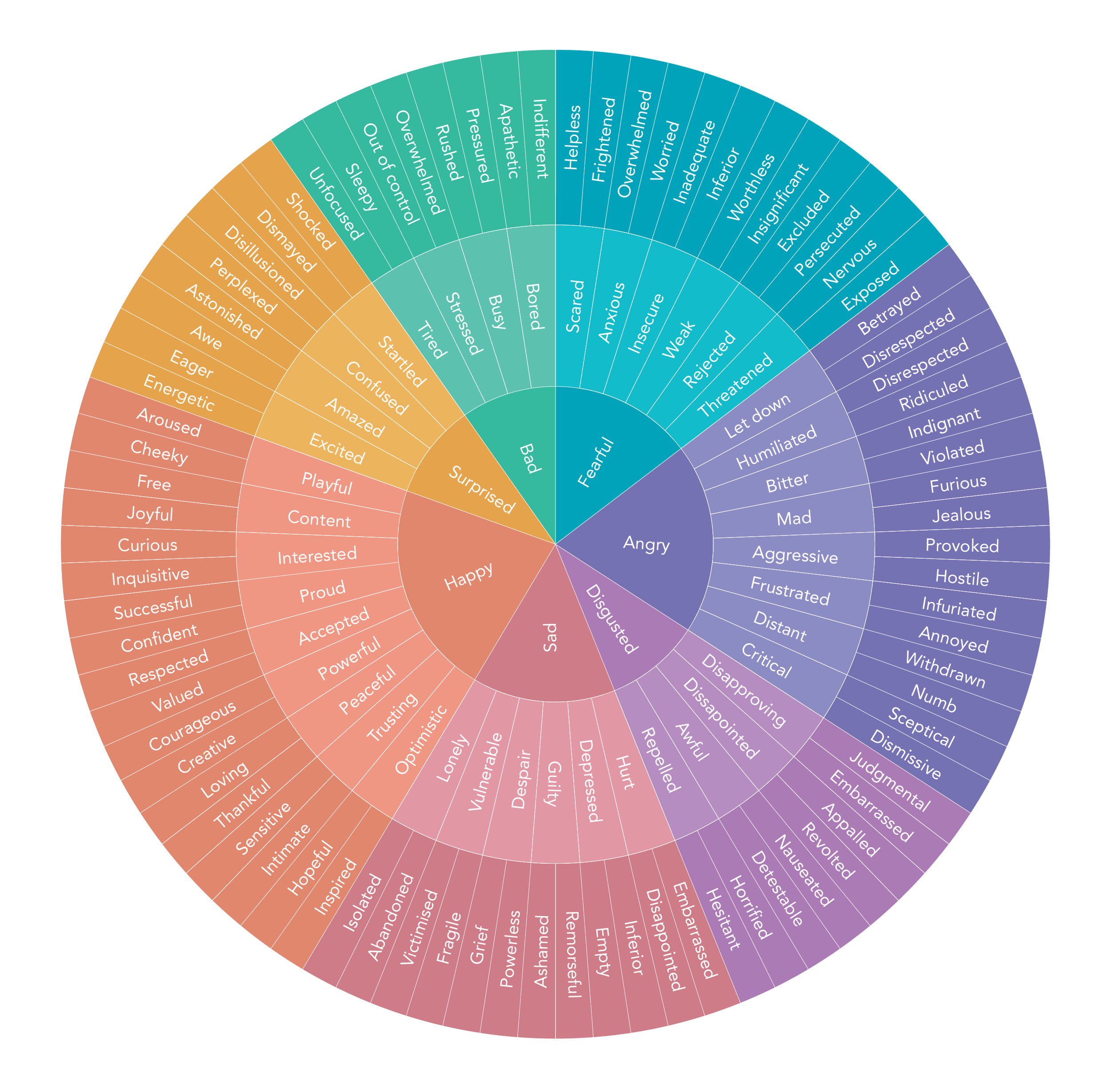No one is exempt from experiencing emotions. That is a part of being here as a human. Why then, do so many people experience difficulty with feeling emotions fully? This might be because of a society that does not value feelings and prioritizes being “good” or “happy” above all else. Other factors can also affect our readiness to feel, like not being allowed to experience or show emotions growing up, or being told that feeling certain emotions like sadness, grief, or anger are “bad” and shouldn’t be felt or expressed.
We eventually learn that emotions are the problem and when we do experience feeling things like sadness, embarrassment, or shame, we are also the problem. We learn to identify with them fully. We think “I am sad” as if we are that emotion. We think, “when I feel angry, I am an angry person. I don’t want to be an angry person so I will not be angry.” But we are not our emotions, even though we feel them. Repeat after me: We have emotions. We are not emotions.
What happens to emotions that have been suppressed? Maybe you’ve heard the saying, what you resist, persists. When we avoid or reject emotions, the energy of those emotions gets stuck in the body. This is why we continue certain cycles and unhealthy patterns. The energy is never released and stays with us until we fully allow ourselves to feel. What we resist, persists.
A common fear about allowing oneself to feel is that the feeling might last forever. All emotions will pass, we might feel one for a longer period of time (usually however long it was resisted), but it will always pass.
Whether you don’t know how to feel your feelings, you don’t want to feel your feelings, or you’re struggling with feeling your feelings, we hope that this guide serves you in some way.
how to get in touch with your feelings
Identify the emotion. The first step to feeling your feelings fully is to identify them (not to be confused with identifying with them). Use the feelings wheel below to help you identify how you are feeling and what triggered it.
Validate yourself. Feeling is a part of the human experience and all feelings are welcome to come and go. Acknowledge this, it might even help to repeat that to yourself. Validate what emotions are coming up for you by identifying it, welcoming it, and sitting with it, without judging it, without wanting it to change, and without thinking of a way to fix it. Remind yourself that it is safe to feel. One way to do this is by using “I” statements like “I feel ___ (insert emotion), it’s okay that I feel (insert emotion), I am allowed to feel ___”. Another way to validate emotions is to write the emotion you’re experiencing in a letter. What would you say to guilt? What would you say to resistance? Speak to them kindly, validating their existence. Anything that is showing up is welcome.
Sit with your feeling. Take 5 to 10 minutes to sit with your feeling. This feeling has been identified, validated, and now it’s time to dig deeper. Ask yourself, “Where is this feeling in my body?” “Where am I holding tension?” “What does it look like?” “What color is it?” “How does this process feel?” If you find yourself thinking, “I just don’t want to feel that.” or “how do I even do this?” sit with that. That is how you’re feeling. Go toward the thing that is blocking or frustrating you. Acknowledge it, validate it, and sit with it.
Express your emotions. After you have identified your feeling, validated it, and explored where it is being stored, it’s time to express and process. There are so many options for expressing and processing emotions, here are a few you can choose from. These activities might seem simple, but the real change comes in your intention. If you intend to use these to feel, you will.
Journal
Dance or move your body
Listen to music you enjoyed as a child
Punch a pillow
Cry
Stretch
Create art
Go for a walk
Take a long shower or bath
Write affirmations
Talk to the emotion
Talk with a safe, compassionate person about how you are feeling
reminders
Emotions are not permanent.
There is no “bad” emotion.
Continue to check-in with yourself by asking, “What do I need in this moment to cope with my emotions?”
Learning how to feel your feelings takes practice. Be patient with yourself.
Sources: milkandhoneytherapy.com


